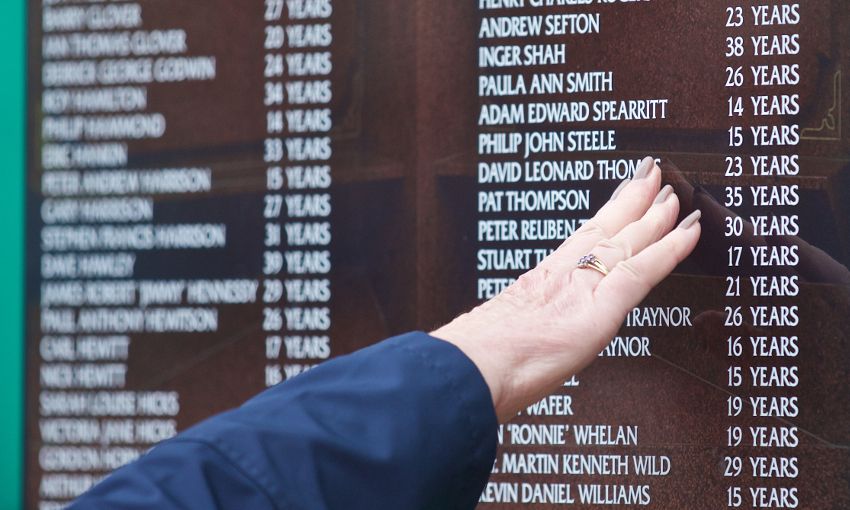Hillsborough inquests - February 1
The Hillsborough inquests commenced on March 31, 2014 and are the subject of reporting restrictions that have been imposed by the Attorney General's office. Liverpool Football Club is respectful of these restrictions and will therefore only be making available updates from other media channels for the duration of the inquest.

The report below - and the witness testimony contained within it - does not necessarily reflect the views of Liverpool FC. Please be aware that the reports on these pages will contain evidence about the day of the disaster which may be distressing.
To view archive reports from each day of the inquest hearings, click here.
Courtesy of the Liverpool Echo - February 1
The jury in the Hillsborough inquests will consider whether it was “sensible” for David Duckenfield to take over as match commander for the 1989 semi-final.
Coroner Sir John Goldring continued his summing up of the case for a sixth day and reminded the jury of evidence they had heard of the police planning and preparation for the match, held on April 15, 1989.
He told the court that then chief superintendent David Duckenfield had been put in charge on the day of the disaster, in which 96 people died, after replacing the former match commander Brian Mole on March 27, just over two weeks before.
At the Taylor Inquiry into the disaster, Mr Mole, who has since died, was asked if he thought that Mr Duckenfield was being “thrown in at the deep end”.
But he said Mr Duckenfield had a wide experience of football and had policed at grounds including Hillsborough and Sheffield United ground Bramall Lane.
The coroner told the jury: “You will no doubt consider whether that was a fair representation of the position, whether or not it was sensible for Mr Duckenfield to take over as match commander.”
The court was reminded of more evidence about the closure of the tunnel, which led to the central pens where the disaster happened, at the FA Cup semi-final in 1988 and other matches.
Sir John took the jury through evidence from a number of fans who described the tunnel being closed off as the pens became full.
But he said a number of officers, including some of those who worked in the police control box, could not recall the tunnel ever having been closed.
The coroner said: “Chief Superintendent Mole, in his written statement, said he did not recall the tunnel to Leppings Lane being closed.
“I have already very briefly reminded you of some minutes of a meeting after the disaster with counsel which, on their face, appeared to conflict with that account.
“It is a topic I shall return to when dealing with evidence gathering.”
The jury was reminded that Hillsborough was chosen as the venue for the 1989 semi-final on March 20.
Liverpool FC made a request to change the allocation of ends from the previous year - when they had been given the smaller Leppings Lane end.
The coroner said: “Mr Mole agreed to police the match on the condition that the allocation of ends was the same as it had been for the 1988 semi-final and that arrangement was accepted by the club and FA.”
Mr Mole told the original inquests he did not want the allocation to be reversed because segregation of fans was an “all important aspect of policing because of the sad situation regarding disorder and violence”.
The jury will be asked to decide if error or omissions in the police planning for the match caused or contributed to the dangerous situation that developed on the day.
The coroner’s court, in Birchwood Park, Warrington, will not sit on Tuesday or Wednesday this week.
The summing up is expected to resume on Thursday.
The police plan for the 1989 semi-final at Hillsborough did not include “important matters” such as monitoring numbers in pens, the inquests into the 96 deaths heard.
Coroner Sir John Goldring reminded the jury about South Yorkshire Police’s operational order for the day of the disaster as he summed up evidence on planning and preparation.
He said the order for officers in F Division, the division responsible for the ground, was very similar to the plan for the FA Cup semi-final the year before.
But he said there were some changes, such as the swapping of roles for match commanders Roger Greenwood and Roger Marshall.
He told the court: “Various matters have been discussed at these inquests which were not mentioned in the operational order.”
Former chief inspector David Beal, who helped to draw up the order, had accepted that the tactic of closing the tunnel to the pens should have been included.
The coroner said: “Mr Beal accepted that, in drafting the order, he should have had in mind the contingency of the late arrival of a large number of fans.
“He went on to say, however, that his drafting of operational orders was influenced by experiences in previous years.”
But the coroner said Stephen Sewell, who was also responsible for drawing up the order, had claimed the plan was only designed to give a brief guide and not to give detail.
When questioning him, counsel to the inquests Christina Lambert QC, referred him to other parts of the order which did contain detailed instructions.
Sir John told the court: “Ms Lambert was suggesting, was she not, that there really was quite a lot of detail in this operational order.”
He added: “Ms Lambert suggested that instructions about important matters, such as how the crowd should be controlled, how the pens should be monitored, were not included because those engaged in the planning, she suggested, did not think to include them.
“Mr Sewell said nobody considered them necessary. He assumed the ground commander and Mr Beal considered them.”
Click here for a full transcript from February 1.



